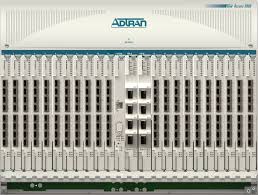Adtran extends 60GHz Gbit symmetric services to 500m beyond mesh nodes
by David MannersAdtran, the Huntsville Alabama networking specialist, has announced the MetNet 60GHz high-powered version 2 (HPv2) CPE.

This second generation CPE aims to improve the economics and time-to-market for extending gigabit symmetric services beyond the reach of the existing fiber network, whether it is a residential broadband, enterprise, backhaul or smart city use case.
Service providers and enterprise customers can now expand gigabit service range and reach via license-free fixed wireless networks with the ADTRAN MetNet 60GHz HPv2 CPE.
Developed using technology built by Cambridge Communication Systems (CCS), it uses a 90-degree phased array antenna that can now extend gigabit symmetric services out to 500 metres beyond the mesh nodes.
This expanded reach translates to 50-70% fewer mesh nodes needed to provide gigabit coverage, which eliminates much of the capital and operational costs, as well as integration time required to push fixed wireless networks deeper into new residential markets and easily expand business services.
The ADTRAN MetNet 60GHz solution, inclusive of both CPE and mesh nodes, delivers a robust, self-optimizing millimeter wave (mmWave) gigabit fixed wireless network. It is designed to reach residential, campus, smart city and business customers, as well as support backhaul/midhaul small cell densification initiatives.
The next-generation CPE significantly reduces the cost per subscriber connected, offering a small form factor while retaining maximum link performance.
The mesh nodes automatically form multi-gigabit backhaul links to neighboring nodes, which enables multi-gigabit drop capability at the mesh node or to aggregate the subtending gigabit CPE. Additionally, mesh and CPE radios can be easily added without RF engineering to further simplify network scalability.
Multiple mesh nodes can be connected into the core network at different 1GE or 10GE fiber point of presence locations to offer additional network capacity and improved resiliency.